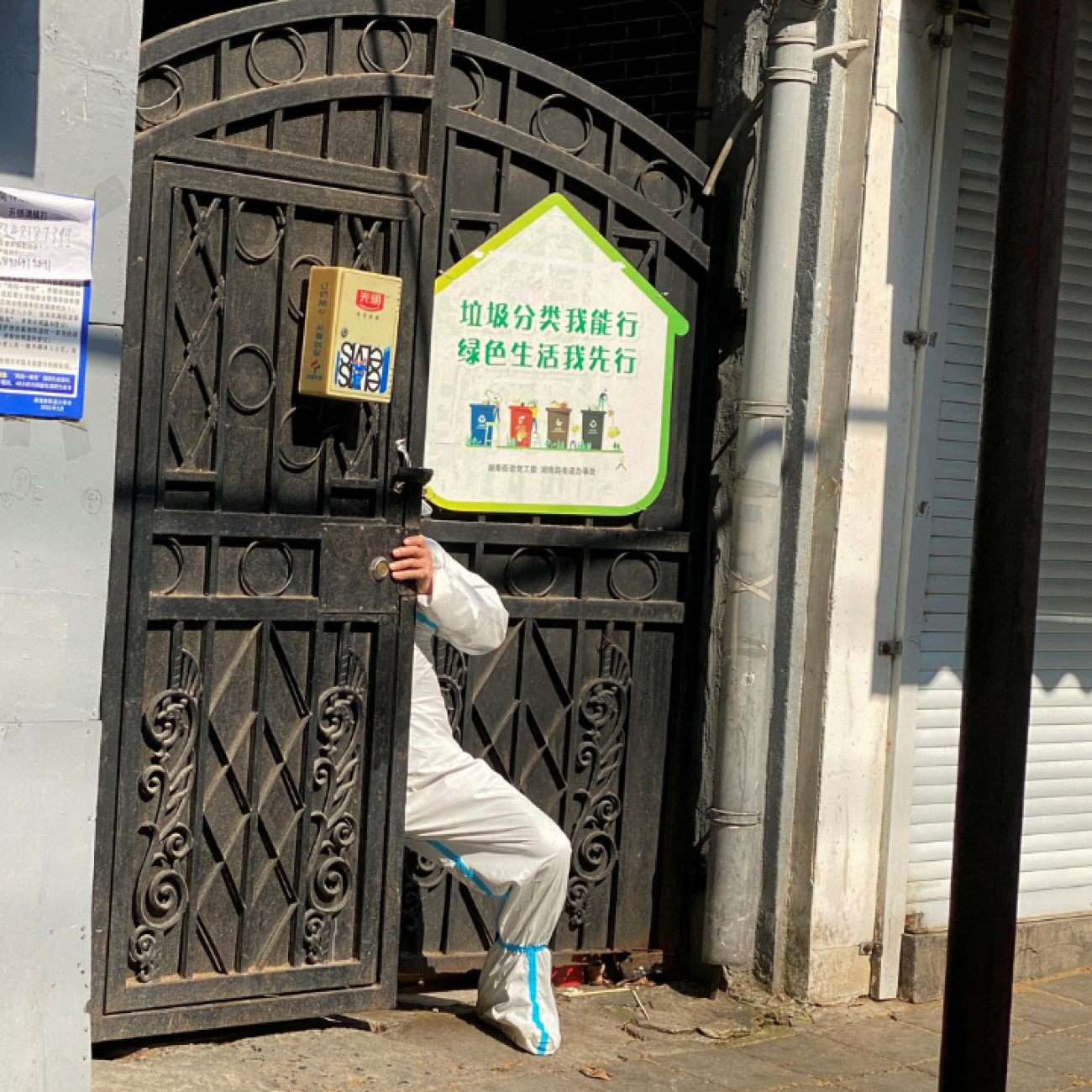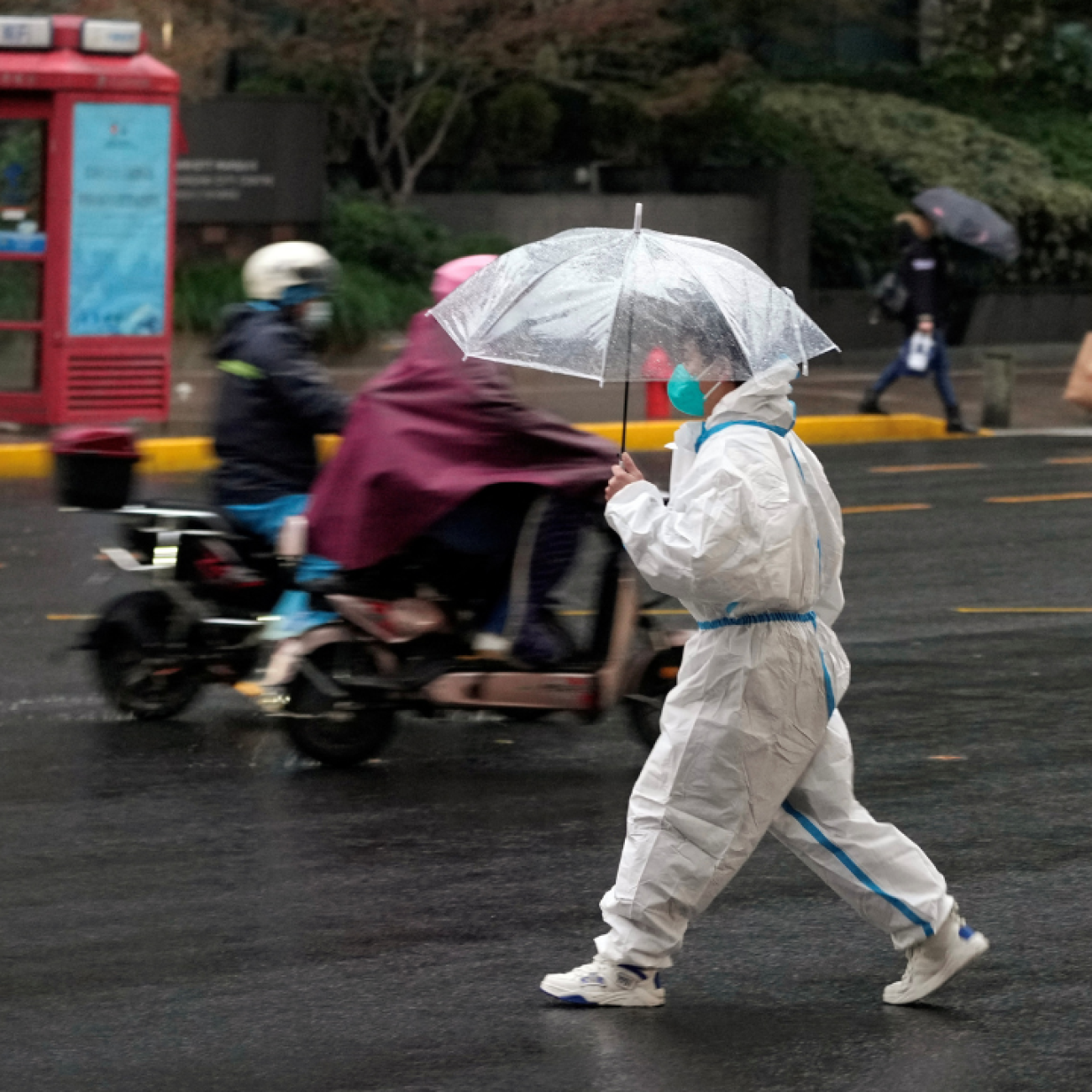In a shocking turn of events, Zhang Yongzhen, PhD, the internationally renowned scientist credited with first publishing the genome sequence of the SARS-CoV-2 coronavirus, staged a sit-in protest outside his laboratory at the Shanghai Public Health Clinical Center (SPHCC). In a country that values stability and obedience, this dramatic action quickly captured the attention of both Chinese and international media. As Edward Holmes, a leading virologist at the University of Sydney, remarked in Nature, "it is unfathomable to me to have a scientist of that caliber sleeping outside his lab."
The immediate trigger for the protest was the SPHCC's decision to evict Zhang's research team from the lab following the expiration of his collaboration agreement with the center. Although the center's director claimed that the issue stemmed from Zhang's refusal to leave and his attempt to impose his own plan on the center, the reality is far more nuanced and complicated.
The two parties cannot even agree on the start date of the agreement. According to Zhang, he signed a five-year deal with the SPHCC in March 2018, set to expire in March 2023. The SPHCC director, however, stated that the agreement commenced in October 2017 and automatically ended in October 2022.
On October 31, 2022, Zhang was informed by center officials that the collaboration would end the following day, even though he was still overseeing a research project funded by the National Science Foundation of China. Nonetheless, a team member, engaged in another significant project in the same lab, secured a one-year contract with the center. This arrangement allowed Zhang's team to continue using the lab until the contract's expiration in June 2024.
Yet on April 25, 2024, the SPHCC notified Zhang that the building housing his lab needed to be renovated and that he had just two days to vacate without being given a relocation plan. When his team pressed for a solution, officials offered alternative lab and office spaces that seemingly failed to meet the biosafety standards necessary for storing samples containing unknown pathogens. On the morning of April 28, the lab was locked, preventing more than a dozen team members from entering to conduct experiments.
Unable to access the lab, Zhang turned to a more drastic form of protest: he slept at the lab's entrance for three nights. Relying on a few students bring him water and food, he described himself as "down-and-out vagrant."
Warm Reception to Cast Away
One might wonder why center officials were so eager to force Zhang out. His relationship with the SPHCC began in October 2017 when he was invited to give a talk. This initial encounter is crucial because it suggests that the collaborative agreement was likely not signed at that time. In March 2018, as part of the agreement and while he was still a full-time researcher at the Chinese Center for Disease Control and Prevention (China CDC), Zhang set up a lab at the SPHCC to conduct virology research.
On January 11, 2020, without official authorization, Zhang published the genomic sequence of the novel coronavirus on the website virological.org. This move was crucial for global researchers because it enabled the development of diagnostic tools and vaccines against COVID-19. Even though the government took credit for this move as an example of transparency and responsiveness, some health officials were reportedly displeased with Zhang's decision, feeling that it "disrupted their plans."
Zhang's decision to publish was crucial for global researchers because it enabled the development of diagnostic tools and vaccines against COVID-19
This discontent might explain why, the day after the sequence was published, Zhang's lab was temporarily shut down for "rectification," a term that implies wrongdoing. The same day, the Wuhan Center for Disease Prevention and Control, with which Zhang had been cooperating for about 10 years, terminated its cooperation with his team and withdrew from "China's Major National Epidemic Virus Resources Survey" project, a key national initiative led by Zhang.
For more than two months, the China CDC withheld endorsement of the project proposal, preventing its submission to the Ministry of Science and Technology for final approval.
As a result, Zhang was effectively cut off from data and collaboration opportunities, which likely explains the decrease in his research output since 2020. He co-authored nine research articles in 2019 and 18 in 2020. This publication rate dropped to three in 2021 and four in 2022. In 2023, he co-authored six articles that, according to Nature, did not use original data.
According to Zhang, he was drawn to the center not only by the significant research funding it offered but also by the warm reception from its leaders. Zhang recalled receiving "multiple invitations" from Zhu Tongyu, then SPHCC director, and Lu Hongzhou, the deputy director. Zhu even lent his car to Zhang, opting to ride a bicycle to and from work himself.
This kindness remained for a period after he published the coronavirus genome—a sharp contrast to the cold face he received at China CDC. In February 2020, the SPHCC formally requested that the China CDC transfer Zhang to work full time at the SPHCC. In October 2020, the SPHCC publicly introduced Zhang as a prospective employee and appointed him director of the newly established East China Institute of Pathogen Biology, with Shi Zhengli, another prominent virologist at the Wuhan Institute of Virology, serving as deputy director.
Yet for reasons that remain unclear, the hiring process was never completed. Because he was not officially hired as a full-time researcher, the center did not pay for his social insurance. Consequently, he went two years without medical insurance, which forced him to postpone a surgery for his severe varicose veins.
In November 2022, SPHCC, believing the agreement had expired, sent a "Return of Personnel File" letter to the China CDC, Zhang's former employer. (In China, a personnel file—or dang'an—plays a crucial role in determining an individual's career prospects, social status, and access to various benefits and opportunities throughout their life.) However, the China CDC refused to accept the file, saying that it had already finalized Zhang's transfer procedures.
The situation worsened after a leadership change in the center occurred in the summer of 2021. Fan Xiaohong, the new director, had gained recognition for leading a 50-person medical team to assist at Wuhan's Leishenshan Hospital during the coronavirus outbreak in February 2020. Official media described her as having "a spirit of courage, resilience, and an unyielding determination." Such an assertive leader, with whom Zhang had minimal interactions, was likely to clash with Zhang, who avoids politics and is known for his admittedly strong personality, impatience, and straightforwardness in speech and actions.
Zhang's history of challenging authority and his involvement in COVID-19 origins research probably cast him as a troublemaker in the eyes of the center's new leadership. According to Zhang's team, as early as mid- to late-2021, when Fan assumed the directorship, the CPHCC halted paying Zhang's contracted remuneration for several months and restricted the use of allocated research group funds, including labor fees for team members and students, as outlined in their agreement.
This hindered their research, particularly in studying the origins of COVID-19. According to Zhang, in June 2023, during his absence, the center's security personnel removed his belongings. Zhang's decision to join the Greater Bay Area Institute for Precision Medicine, in the city of Guangzhou, only provided further justification for the center to act against him. In September last year, while Zhang was still using the lab at center, affiliations listed on a paper published in Cell by Zhang's laboratory no longer included the SPHCC.
The Implications
As news about Zhang's situation spread widely this week, both Chinese and international media expressed overwhelming sympathy for him. With the SPHCC's reputation and even that of the Chinese government broadly at stake, the center finally agreed to allow Zhang's team to temporarily resume its research activities in the lab, according to a Weibo post by Zhang on April 30, 2024. Zhang was fortunate, as one commenter observed: "If it weren't for Weibo, who knows how badly Professor Zhang and his students would have been bullied by the bureaucrats."
The episode also provides a rare glimpse into the strained relationship between science and politics in China
The episode also provides a rare glimpse into the strained relationship between science and politics in China. Against the backdrop of a highly politicized pandemic and heightened information control, it is difficult for a scientist like Zhang to conduct his COVID-related research in solitude.
An administrator-dominated scientific research structure, which prioritizes bureaucratic authority over scientific integrity, could exacerbate the situation. Driven by concerns of their political careers or personal security, administrators and bureaucratic officials may have strong incentives to sideline potential troublemakers whose research agenda does not align with their political expectations.
As a result, scientists in China do not enjoy the same autonomy as their American counterparts. Instead, they face the challenge of navigating complex bureaucracies and power dynamics while conducting their research. As a Chinese commentator asked online, "Is it so difficult to respect science?" to which another replied, "science is nothing in front of power."
It might be overly simplistic to attribute Zhang's experience solely to punishment for his COVID-related research. Other factors were also at play. For example, a culture that lacks the spirit of contract might account for disputes over the implementation of the agreements between Zhang's team and the SPHCC. Changes in SPHCC leadership, especially the appointment of a new director, certainly worsened the situation.
Zhang's ordeal was the result of a complex interplay of personal, cultural, institutional, and political factors.





